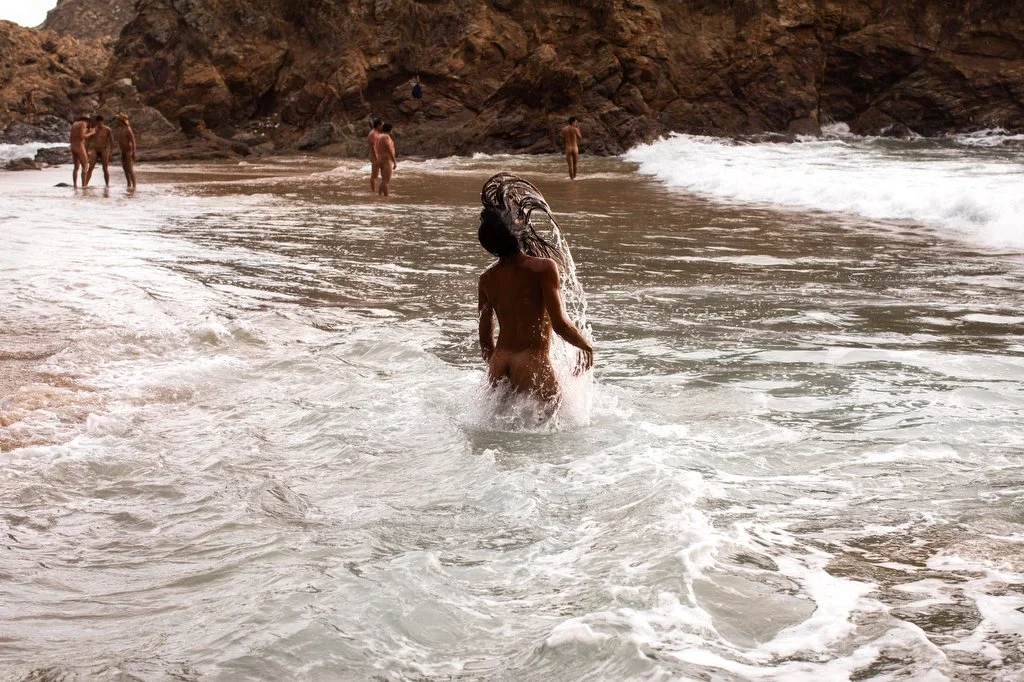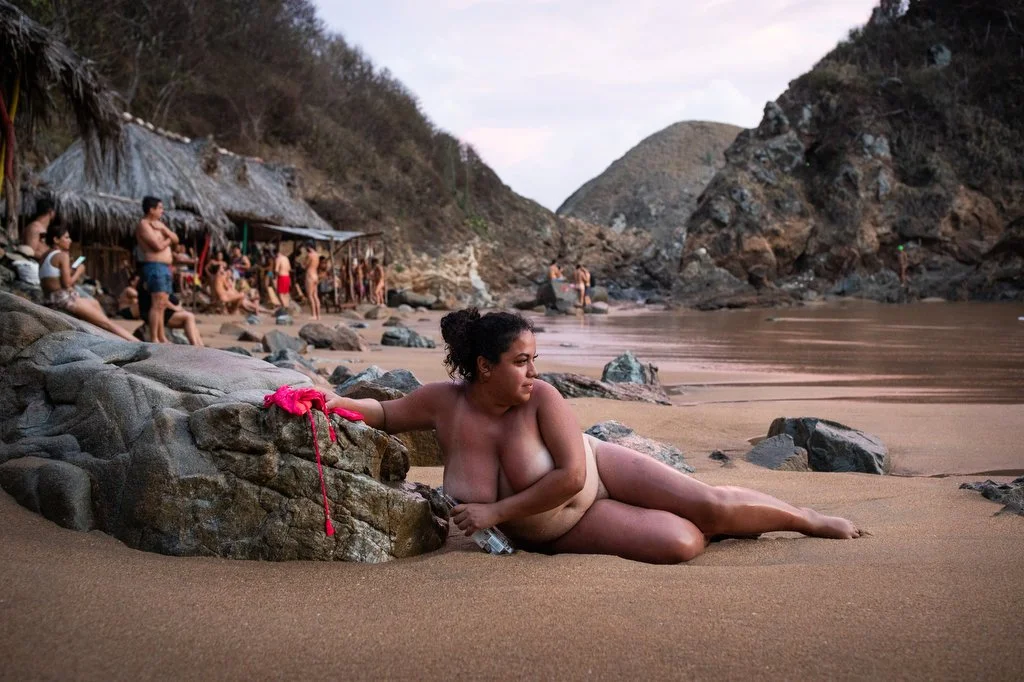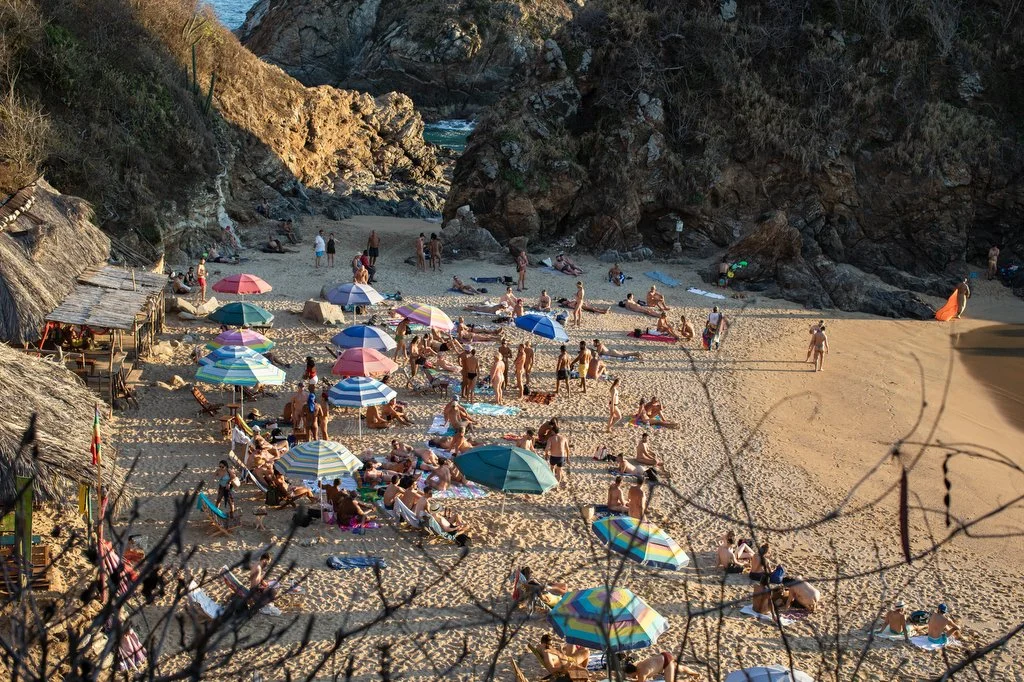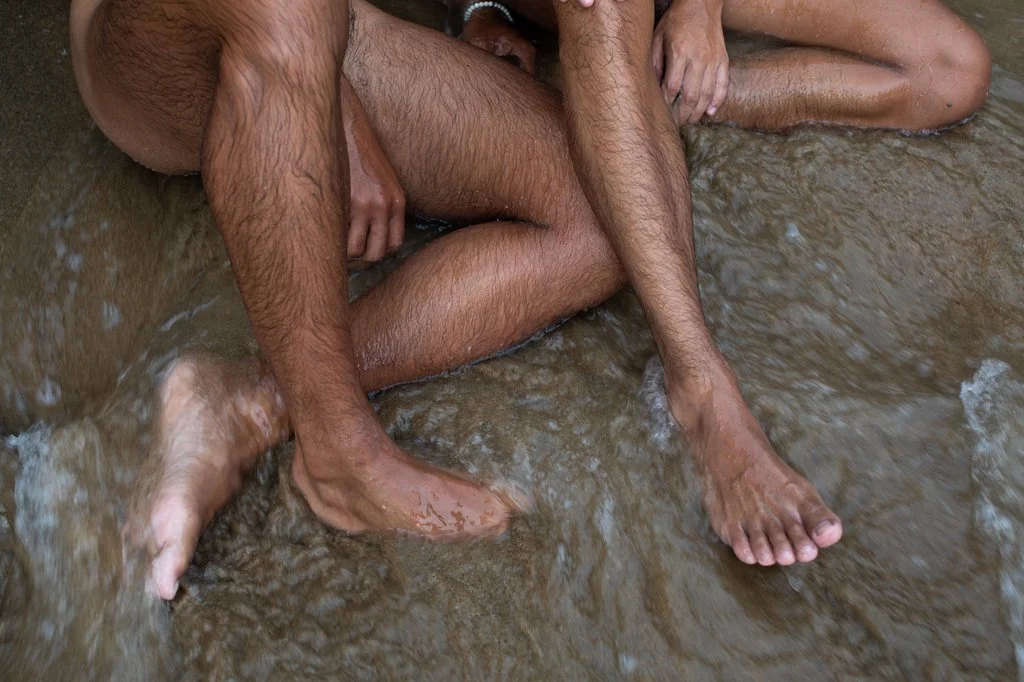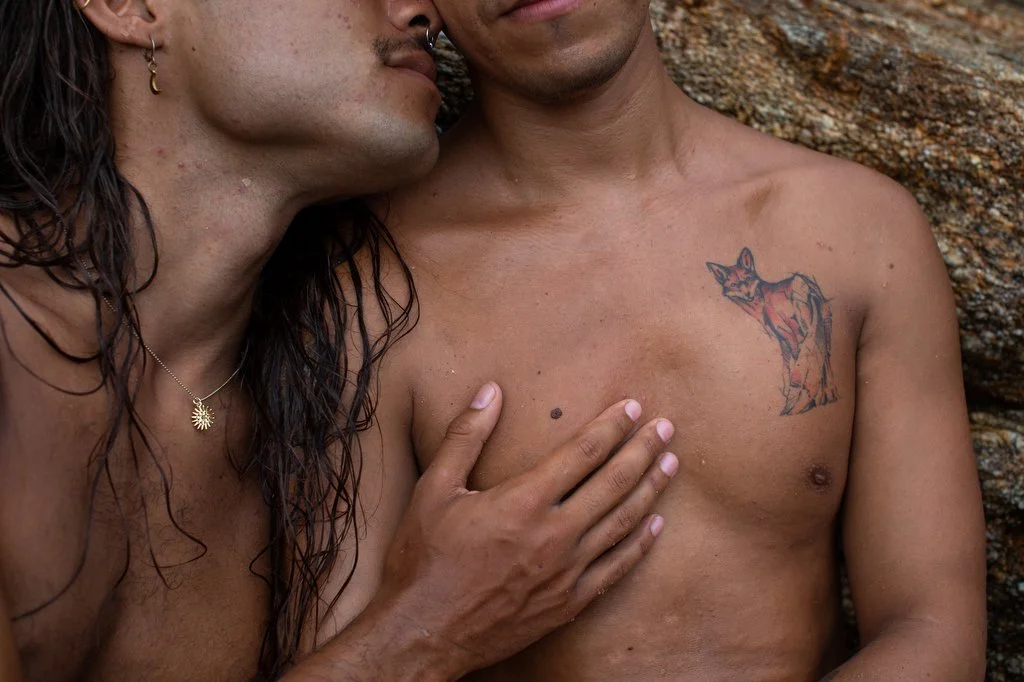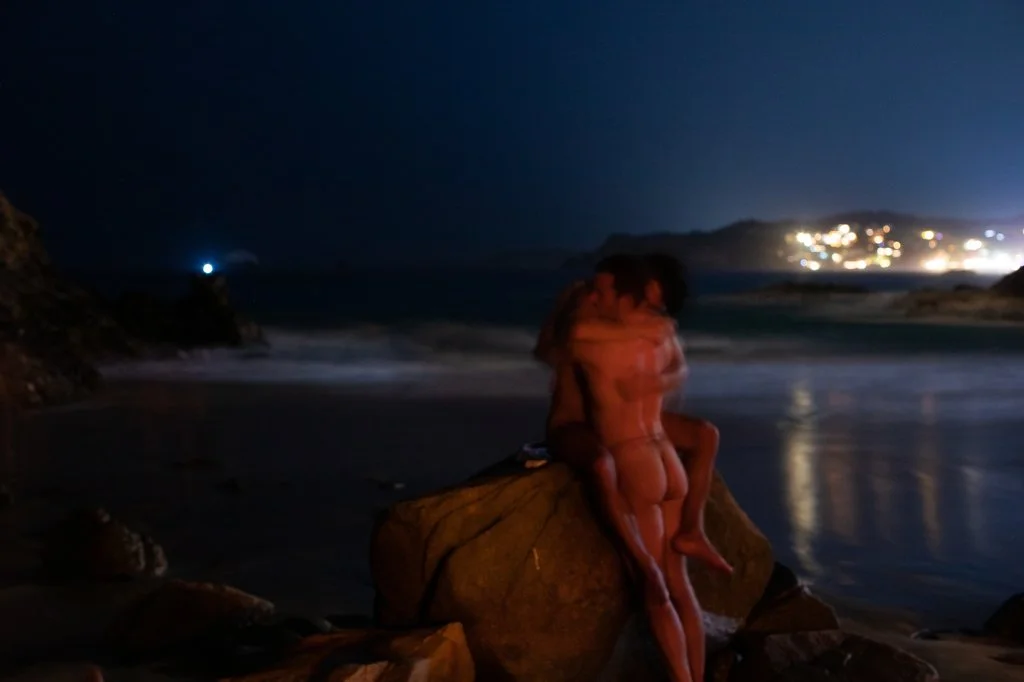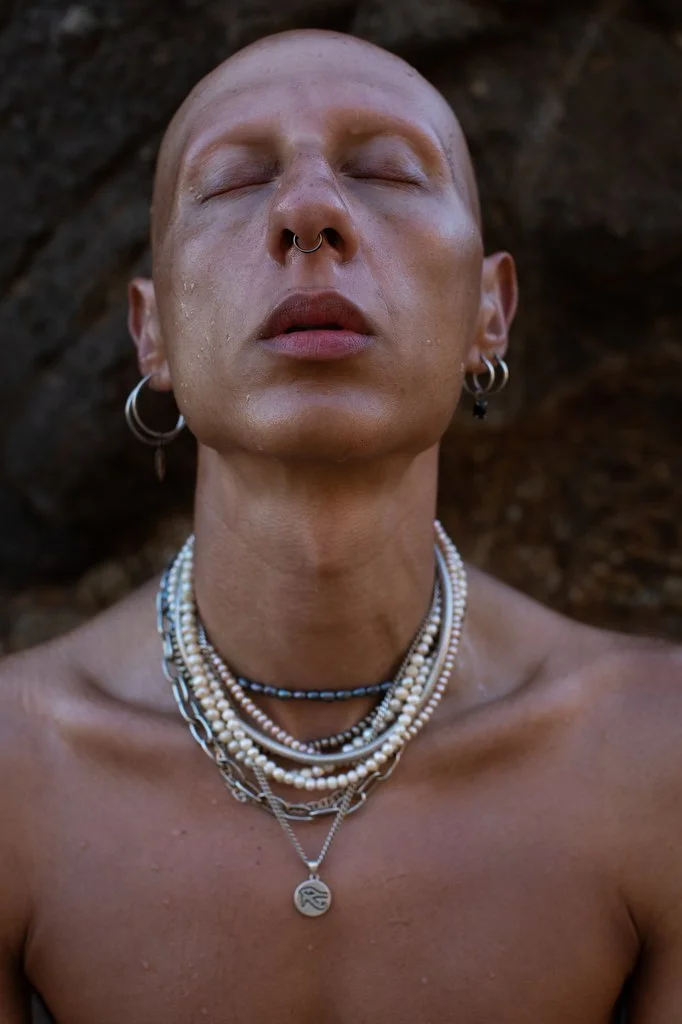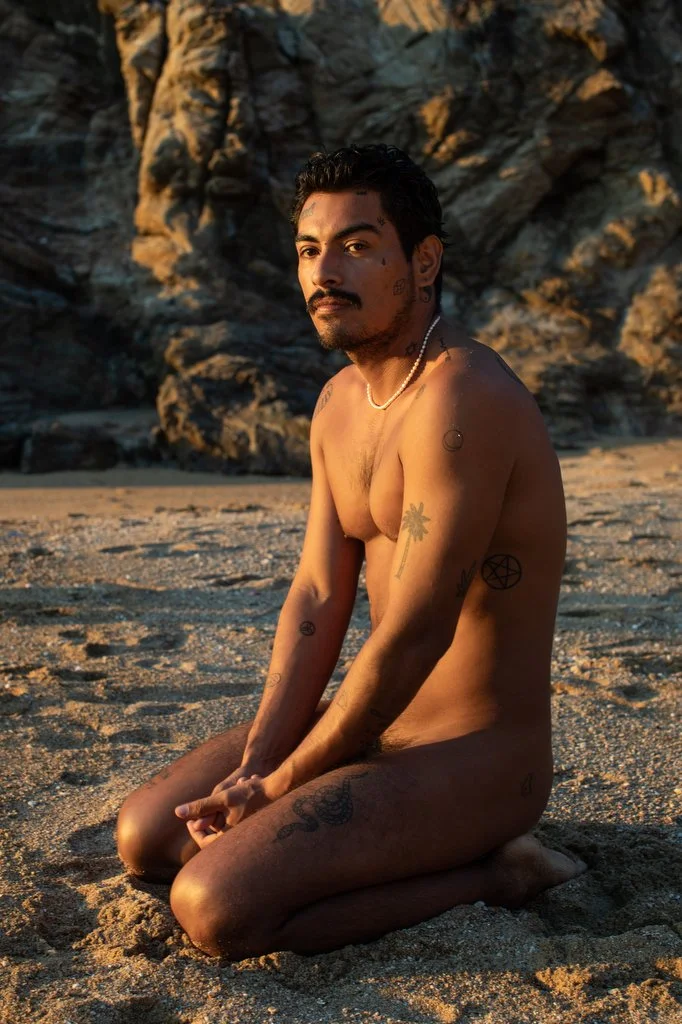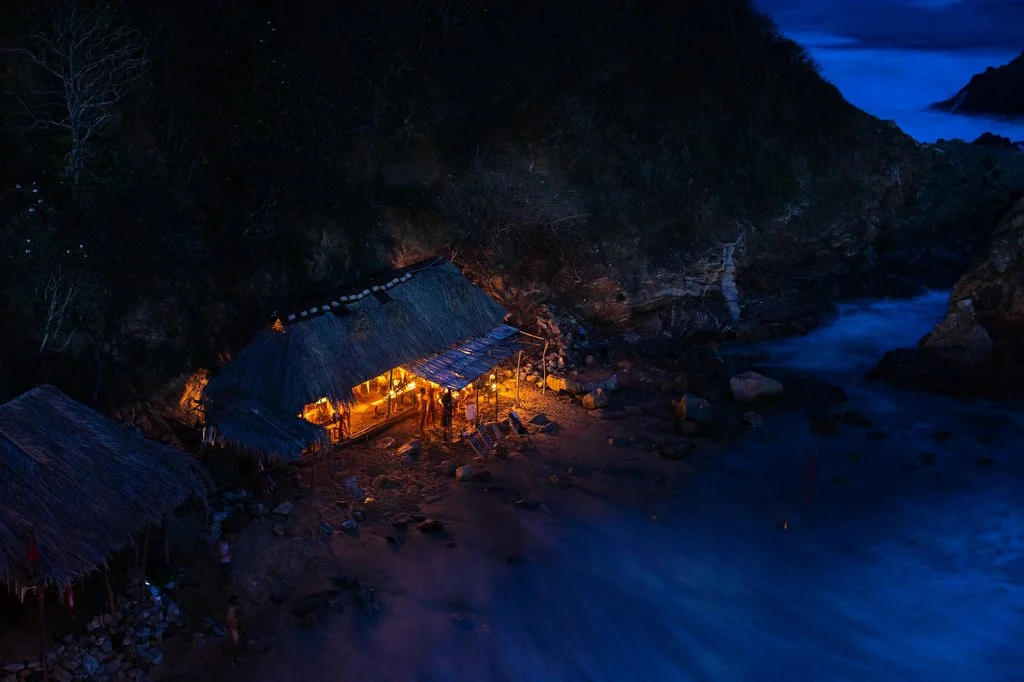playa del amor
ZIPOLITE, Mexico — When the sun starts to slip toward the ocean in this idyllic beach town on Mexico’s Pacific Coast, a quiet migration begins. Groups of people, most of them gay men, many of them naked, amble down the beach toward a soaring rocky outcrop.
They climb a winding staircase, over the ragged cliff and down to a hidden cove known as Playa del Amor, or beach of love. As the sun becomes an orange orb, the sky turns to lilac, and the many naked bodies, Black and bronze, curvy and chiseled, are brushed in gold. When it finally dips into the water, the crowd erupts in applause.
“Playa del Amor at sunset, the first time I saw it I truly felt like crying,” said Roberto Jerr, 32, who has been visiting Zipolite for five years. “It’s a space where you can be very free.”
Text by Oscar Lopez Gibson
